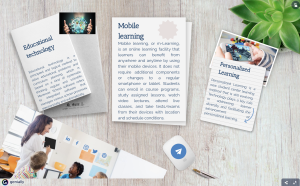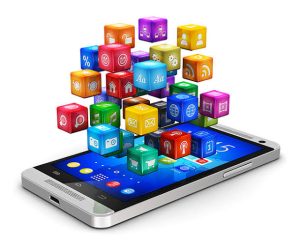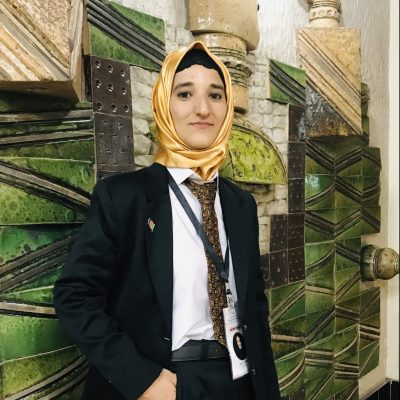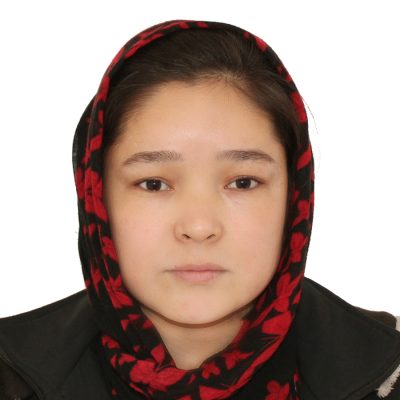Teaching and Learning with Technology
7 Educational Technology and Mobile Learning
Masturah Pakbin Alizada; Bibi Lina Azizi; and Tamana Setayesh
Learning Objectives
After reading this chapter you will be able to:
- Understand the positive impact of educational technology and mobile learning
- Promote better learning with the use of modern technology in Afghanistan.
- You will become familiar with teaching learning and mobile learning.
- Understand the role of learning technology in personalized learning.
- Mobile learning seeks to utilize the mobile device’s unique capability to make course materials for students.
- Develop the practical skill to solve problems.
Abstract
This chapter consists of an overview use of technology in the education sector such as computers, tablets, Screens, Mobile calculators, etc. And it is the most accessible for education so Pedagogical technology in education plays an important role because it helps instructors to use modern technologies in their teaching and learning. Hence, Since 2013 Afghanistan faced a lot of challenges in the education sector including a Lack of professional instructors weak quality education system, and a lack of resources in 2001 the Asian foundation has recently started the use of technology to develop education in Afghanistan and standardized college, and final exams. Therefore, with the help of understanding the role of education in personalized learning, we can develop and bring sophisticated changes in Afghanistan’s education sector through the use of the Mobile device, Use of diverse technology, and course material then by developing practical skills the students can easily solve complex problems. In this chapter, we interviewed two Instructors Who Had experience with online teaching and we got an idea that how they related and shared resources with their students with the help of education technology.
Introduction
Education is a basic need of every society, it helps societies, communities, and countries to achieve sustainable development. Education is the key to success in our lives. Because it improves our understanding skills, and moral and emotionally intelligent. Nowadays with the development and innovation of technology in the education field, education becomes more expanded around the globe, and with technology, students and teachers can teach and learn more effectively. Educational technology makes the transfer of information easy and comfortable by using mobile, apps, platforms, computers and so far. Students and teachers can communicate with students by using educational technology such as applications, and platforms. In practice, educational technology is provided by designing and evaluating curricula, and educational business, and implementing and modifying them, in other words. Educational technology is a principled and logical method to solve educational problems and curriculum planning, which is based on a kind of systematic thinking, regular and scientific.

Moreover, School software refers to integrated software that manages various school processes electronically and automatically. Processes such as online management of classrooms, holding electronic tests, managing students’ attendance and school management dashboards, and using school software, school administrators and staff can store students’ data and information in the cloud and use them when needed and without any time or place restrictions, to have access to student’s information. Furthermore, by developing education technology, online learning emerged. Online learning alludes to instruction that is conveyed electronically through different devices such as web stages and applications. It is used ‘interchangeably with other terms like web-based learning, learning, e-learning, computer-assisted instruction, and Internet-based learning'( Maddison et al., 2017). It means in online learning students and teachers communicate through applications like zoom, email, and other educational platforms and applications. In the last 20 years, the Internet has become the biggest and most open database of information. This way has changed people’s communication, shopping, socializing, trading, and thinking about knowledge and opinion. Online education is more than a new development in distance education, it changes the appearance of traditional classrooms and puts education more on track. Online learning is a method in which students learn in a completely virtual environment. First introduced in the 1990s with the creation of the Internet and used in distance education, online learning or e-learning is the most common in higher education, that enables students from different geographical areas, to connect with an academic institution. (Gilbert,2015). During covid 19 pandemic online education expanded and was implemented in most countries around the world including Afghanistan. In Afghanistan, during covid, some provide and few public schools implemented online education.
EducationAl Technology: Definition and Examples
The system definition of educational technology in society addresses basic theoretical concerns (external perspective) and considers some usages and guiding principles expressed in the field (internal perspective). Summarizing the key issues identified in the discussion (outside perspectives), the criteria for conceptualizing technology in the field of educational technology are the mental processes and products that serve human purposes embedded in socio-ecological contexts. revolves around concerns about These standards are important elements in defining educational technology for society. By linking the definitions and analyses provided in this article, we can: (1) design, develop, and evaluate a goal-oriented approach to problem-solving using tools, techniques, theories, and methods from multiple knowledge domains; As a system approach, we propose a system definition of educational technology. , efficiently and effectively provide human and mechanical resources to facilitate and utilize all aspects of learning, and (2) direct institutions of change and transformation in educational systems and practice and Contribute to influencing social change.
Education technology is about learning teaching conditions to develop the efficiency of teaching and training also it is the systematic application of science knowledge (Leith, 1967).” Shiv K. Mitra: ” Education technology can be regarded as a science of technique with the model by which education objective could be utilized (Mitra,1968) S.S. Kulkarni: “Educational technology may be defined as the application of the laws as well as recent discoveries of science and technology to the process of education (Kulkarni, 1969).” D.Unwin: “Education technology implemented with the modern techniques and skills which require for education training. This provides the facility of learning by running the media or skills and managing the environment that affects learning (Unwin, 1969),” Kenneth Richmond: “Educational technology managing and design the best learning environment which, which look for the objective of training teachers to bring qualified instructor. ” I.K. Davies: “Education technology is distributed with the problem of education and technology or training context and it is consisting of policy and systematic approach to organizing the learning material.
The objective of educational technology:
Education technology has a positive effect on learning and teaching, forgetting strong and best possible results economically by existing human and non-human resources. The major objective of education technology can be summarized here.
- To associate educational needs and motivation of learners in the world.
- To recognize the goals of education, different strategy, and structure of education.
- To create a suitable curriculum related to science human values and arts.
- To determine the man- material resources or strategies for gaining the objective of education.
- To manage all education systems covering planning, implementation, and analyzing the phases.
Scope of education technology:
Educational technology is considered with all variable levels, and aspects, of the learning and teaching process. So it works for all learning processes. in short, it works for the overall planning and managing of the system or subsystem of education. The area which manages by education is below.
- To organize the teaching with the learning process: technology and education want to discuss the concept of teaching, the process of teaching, theories of teaching also the relationship between learning and teaching.
- To determine the educational goals or objective: the education technology explains the topics such as identification and education needs and encouragement of community and providing of resources for available satisfaction of need.
- Development of Curriculum at school and university: educational technology prepares a suitable curriculum for the improvement of educational objectives.
- Development of learning and teaching Material: education technology is concerned with the development of new production and material for the teaching and learning process to achieve goals and design the curriculum.
- Teaching training and teaching preparation: The teacher is a key figure in any process of learning and teaching so education technology tries to bring proper preparation of the instructor for performing the complex task they have.
- Improvement and selection of teaching Learning Strategies: So this part is connected with the main problems of the learning and teaching act. Here education technology tries to explain the different ways of discovering, selecting, and developing strong strategies or tactics for teaching.
- Improvement, Selection, and use of the appropriate Audio – Visual Aids: Teaching and learning have been influenced by the use of proper audio – Visual aids. Education technology figures out this aspect by explaining different audio-visual aids used for educational purposes.
Role of education technology in personalized learning
Personalized teaching is a new student-centered learning method that is still evolving. education technology plays at an essential role which practices social and cultural diversity providing vide advanced resources withpersonalizede learning for the r development
education . in addition, teachers ask students to complete personalized programs that track their briefs and skills. Self-governance and the student’s rights in the curriculum are distinct personalized features. It’s better to tailor it to the individual: Schools and classrooms that are personalized use progression in competence to move students from mastery of their current tasks to the next subject when students need more help. have enough time in their daily schedule (Patrick,2015). Furthermore Creating personalized environments to enter the university and the job market is also possible. A student who does not need extra help or other work can work with the teacher on social skills and other 21st-century skills. Personalized is highly student-centered, but teachers must teach lessons, review grades, and implement curriculum plans with students regarding any necessary changes. You also need to be familiar with the technology. Separate and personalized training is in the form of online courses and programs, and teachers must use virtual platforms.
An instructional methods the visible to matches and guide each in visual quality and capability with interests is known as personalized learning. Using digital tools to quickly differentiate instructional materials and provide students with more complete learning experiences has been a major trend . so, in the past ten years many educators are using technology in the classroom for this purpose to address students’ diversity and focused o individualized learning, modern technology has been instrumental. moreover, by the use of technology teaching and method, students can simply access course material, evaluate learning and express themselves in different ways. The affordability of technology create that create appropriate pathways and allow teachers to push, intervene, and support students as needed. Native assistive technology features can also be added to online environments to enhance them. (How Can Technology Support Personalized Learning? 2023)
Electronic learning management system
In this part, I want to write about how an e-management system can help schools in online education and training. In recent years, especially in the latest months when the Corona crisis plagued human societies, in a international organizations with schools and universities tested the (LMC) which has made fundamental and changeable structure, performance, and effectiveness. LMS modern technology support schools create, implementing distribute, managing all activities associated with online education (Gold &Groom, 2013).
Implementing LMS e-learning system technology can create and experience a more powerful, simple, personalized, and interactive classroom. It has the below advantages for the management of a classroom.
Setting up the electronic learning system is easy and focused:
LMS electronic learning system software is one of the easy-to-use technologies, which is very simple to get accesfor s various educational purposes. LMS combines all university and school program, different subject study directions, and training modules for all understanding email learning content is stored in one signal central location instead of various ard drives and devices This feature reduces the problems and risk of data loss and simplifies content management.
LMS e-learning system makes e-learning content easy to access
After making online content and adding it to the e-learning management system, learners will have access to unlimited recourses. Learners can easily available the Internet with different pc. They have and use the educational content of the e-learning system. Class programs are not limited to regular school hours. Even after school, extra courses can be easily structuredmaking it satisfy for both instructor and students.
It makes it possible to follow the learning paths of students
An LMS, or cloud-based e-learning management system, helps you track student development and make ensure they are on track with their learning. An LMS software can, by getting accessing a learner’s report, make the improvements needed for their eLearning content, even generating a suitable eLearning path for the learner according to their performance.
An e-learning LMS system saves money and time
The use of the LMS electronic learning system which analyzed the cost of machine educational recourses and pamphlets, getting books, and creating separate movie conference tools, which sometimes have relatively expensive requirements. LMS e-learning system helps in the complete management of educational programs and content, thereby saving time and money for schools as well as students.
It allows FOR updating and expanding learning modules
The e-learning devices add updated modules and strategies to a previous e-learning course .learning path Learning recourses can also be connected with personalized learning way (definition of a virtual learning path: the sequence of steps a student must follow to finish a va virtual course allow the teacher to modify his/her activities, to manage a multi-student content feed.
LMS electronic learning management system is reliable and safe
After hacking Zoom software and exposing its information, many people were worried about security flaws in this video conference program. We must say that LMS electronic learning management systems are much more secure because there is more access to this system and the integration of its functions and functions. Antiviruses and IP blockers also help with this.
It requires less training
Most LMS of online schools is designed according to the technical abilities of students and teachers. Hence, they have a simple user interface. Teachers, often with a short meeting, can see the required training and create, manage, and direct their virtual training courses in the LMS learning management system (Dias and Diniz, 2014).

With new developments the management system trying to inclincludethe world .F or the longtime customization in future educational technology will be endless and can ultimately help any educational institution willing to develop rapidly. The result of training with the help of the LMS and the increase in the skill of the management system ensures the level of knowledge and confidence of students.
Mobile learning
Education is at a critical juncture in Afghanistan. It is vital for workforce development and economic prosperity, yet serious reform is needed. Education means human development and evolution (WEST, D. M.2015). Any educational system devoid of values will not match the concept and meaning of the term education. As it has been said, education has two concepts, or rather, like a two-sided coin: One side of which is learning knowledge and skills. And the second one is to turn to the values that use them as the basis of human evolution. Due to the current situation, the children and young people in Afghanistan need education more than ever. Because the people of Afghanistan are facing a serious problem of lack of education. On the one hand, economic problems and on the other hand, preventing half of the population of Afghanistan (women) from educating by the current government. This disjuncture creates major problems for young people about to enter the labor force.
Therefore, Mobile learning is a way to solve many of the educational challenges in Afghanistan. Devices such as smartphones and tablets are driving innovation and helping students, teachers, and parents access digital content and personalize assessments, which will be essential in the post-industrial world Mobile devices, used in conjunction with near-universal 4G/3G wireless connectivity, are an important tool for enhancing student learning (WEST, D. M.2015).
With mobility, learning does not need to be a place or time-specific Teachers can teach 24/7, and learners can study anytime, anywhere – at 2 p.m. or 2 a.m. They simply turn on the tablet, download the lessons and start learning. But what kind of learning is it? This is not the traditional way of learning in the era of blackboards, where students had to be present in class, take notes with pen and paper, and erase them with an eraser. But it is conventional learning in the age of technology.
In higher education, e-learning systems, online platforms, and portable devices are the channels between instructors and learners, and the information provided by instructors and received by learners on these systems, platforms, and devices will circulate quickly and be readily available. This may be because the information is electronic It’s digital It spreads over the network with incredible speed and can be stored on computers for a long time It is malleable and transferable as a result, people expect digital content accessible on mobile devices to be conducive to education (DePietro, P. 2013).
Most of the time, education using mobile and online platforms is learning while moving. It is the instruction that is practical for groups of students who work full-time isarearents, reside far from campus, or cannot otherwise commit to the site- and time-specific class meetings. This type of education serves a useful purpose by making education accessible to student demographics that, in the absence of mobile education, might not have any education. However, instructors must methodically and carefully plan out how educational content is presented on mobile devices and the internet for convenient education to result in high-quality learning and prevent chaos (DePietro, P. 2013).
Pros of M-L
Whether it is for professional training, personal development, or daily life, modern people access information via mobile devices. This is the hottest trend in the learning world right now for some reasons; as organizations better understand the importance of “mobility”, fueling their interest in implementing mobile learning.
1-It makes learning available and flexible
Mobile learning offers learners optimal accessibility and flexibility. Learners can access mobile learning courses anytime, anywhere via their mobile devices, meaning they don’t necessarily need to attend classes during office hours they can access and try classes at home,commutingomuting, or even during breaks.
2-Timely studies
Our age of technology has undoubtedly made our professional lives faster and faster. It speeds up every task, process, and operation in a business organization. So, while it increases our productivity, it also keeps our lives busier by being able to do more work and introducing new tasks and responsibilities a fast-working life requires a fast-learning method Tip, mobile learning! This strategy is perfect for this high-speed life as it provides just-in-time training to employees. Short-term mobile learning courses called micro-learning offer learning modules of up to 5 minutes that employees can access quickly to review or learn job skills, such as how to conduct themselves in meetings or how to respond immediately to a customer.
3-Improve completion rate
No one has time for half-hour e-learning courses anymore Due to the small size of mobile learning courses; learners can quickly complete the course and move on to the next one. This increases the completion rate of these courses because learners do not need to spend as much time there each day. Gamification elements such as rewards, points, and level progression can be added to micro-learning sessions to further motivate employees to succeed and complete their training.
4-It offers higher engagement
Modern people are used to receiving short and focused information on their smartphone’s social media applications, such as Facebook, YouTube, and Twitter, which have conditioned us to receive information in this particular way While brief bursts of visually appealing information captivate us, mobile learning content is perfectly suited to be designed in a visually appealing way and be interactive in an engaging way.
5-Provide personalized learning
Mobile learning has become popular because training and development professionals understand that they need to adopt and execute a learner-centered approach to learning by providing freedom and accessibility to learners. Personalized learning is another learner-centered approach that works well for e-learning courses while providing learning tailored to each learner’s strengths, needs, skills, and interests. This is achieved through unique learner-learning journeys that respond or adapt to their progress, motivations, and goals by collecting accurate and relevant data.
Cons of Mobile Learning:
As with everything, there are downsides to consider in mobile learning. Mobile learning can leave
students easily distracted, lacking social interaction, relying too heavily on technology, lacking
personalization, and excluding students who lack access to quality technology Let’s explore each cause in
more detail below (Kaltura, 2022).
1-Distractions
The fact that mobile learning in education requires students to access content via mobile devices is only
one of its many advantages. Yet, it also implies that pupils are more susceptible to being sidetracked.
During class, students may get text messages, emails, and social media updates. The involvement and
completion are reduced as a result of these diversions.
2- A lack of social engagement
Although encouraging students to form meaningful online relationships, mobile learning does not support
significant face-to-face interactions. While some students do better in more solitary settings and at t
own speed, others might rely on social relationships to keep them motivated. This becomes even clearer
when students enroll in courses that call for a long-term commitment.
3. Use technology
Like online learning, mobile learning is reliant on technology. If OS compatibility and mobile
device optimization are not taken into account, courses might end up being cumbersome and challenging
to utilize. Dependence on technology might also exclude abilities that are grounded in real-world
experience. For instance, without feedback and supervision .Despite, artists, and mechanics may
find it difficult to acquire practical skills.
4-Limited customizability
In spite of engaging assessments like interactive quizzes and tests, students can still miss out on
personalized feedback when taking mobile learning courses, which makes it harder to learn and develop
new skills. Personalized feedback frequently comes from an individual tutor, class instructor, or team
leader.
5 – Poor technology
Not all students have access to the most recent equipment or dependable internet, despite even thothoughome students can utilize outdated equipment for their coursework or have inconsistent access
to energy and the internet.
Impact of M-L according to Afghanistan conditions
Considering the advantages mentioned, people use mobile phones for learning. Therefore, if we have a vision for Afghanistan, people in Afghanistan currently learn the most from mobile phones. Mobiles are a tool that every family has access that, and every young person may have a personal mobile. So, I can say for sure that mobile phones in underdeveloped countries like Afghanistan have the most users, the most applicable, and the best results. According to the many challenges the people of Afghanistan, using mobile learning is the best option, because if we discuss from an economic point of view, people in Afghanistan have less income, and using mobile is the best opportunity for them to learn online classes, online universities, using from free applications, learning different languages, participating in different learning groups through social media, such as WhatsApp, Telegram, Facebook, Twitter, etc. In addition to these, free bookstores or libraries, various classes, and skills training such as music, cooking, painting, calligraphy, playing, etc. All these opportunities are possible without mobile at a very high cost, for example, buying books from bookstores, it is possible to buy each book at the price of 200 Afghanis, but the reader needs more books to read and has to consume many books. Should spend a lot of money and may not be able to find the books those needs and favorites easily or may not be able to find. But by the usage of mobile and the Internet at less cost, they can buy and read the most reliable ks from the world’s most reliable authors, from websites, online libraries, Telegram, etc. In addition to an economic issues, the current conditions of Afghanistan with many educational restrictions are a barrier for young people, especially women; the use of mobile has provided them with the best facilities for learning. Before explaining how mobile has provided opportunities for the people of Afghanistan.
I feel it is necessary to emphasize the limitations of the current government. Because it helps to understand better the conditions and will realize how useful the use of mobile for teaching and learning in Afghanistan has been for the people of Afghanistan. After the fall of the Afghan government by the Taliban on August 15, 2021, until today, schools, universities, language, and skills training courses, performing duties, traveling from one place to another, etc., have been closed for women. And they do not have the right to education in any field of science. And the Taliban does not allow women to get an education, even though the people of Afghanistan want their daughters to go to school, go to university, study, and progress. But unfortunately, the Taliban, which currently owns the government and power in Afghanistan, does not allow them. This is the reason why they follow and study online courses which, prepared by helper people from inside and outside of Afghanistan for teaching different fields by using their mobile. For example, some institutions and groups help Afghan students in the education sector so that they can continue their studies in these bad conditions and there is no need for them to use computers, large screens, or other expensive tools. Only students with mobile can attend classes, have access to course materials, and assignments, and can be in touch with their professors and classmates. So, considering the conditions and benefits of using the phone in Afghanistan, it can be clearly said that using mobile can solve major national and even global problems, and mobile an excellent tool for education, learning, and progress. In addition to these benefits, you can use many offline applications and games to learn everything, especially language and skills, individually and without classes, teachers, and instructors.
their daughters to go to school, go to university, study, and progress. But unfortunately, the Taliban, which currently owns the government and power in Afghanistan, does not allow them. This is the reason why they follow and study online courses which, prepared by helper people from inside and outside of Afghanistan for teaching different fields by using their mobile. For example, some institutions and groups help Afghan students in the education sector so that they can continue their studies in these bad conditions and there is no need for them to use computers, large screens, or other expensive tools. Only students with mobile can attend classes, have access to course materials, and assignments, and can be in touch with their professors and classmates. So, considering the conditions and benefits of using the phone in Afghanistan, it can be clearly said that using mobile can solve major national and even global problems, and mobile an excellent tool for education, learning, and progress. In addition to these benefits, you can use many offline applications and games to learn everything, especially language and skills, individually and without classes, teachers, and instructors.
Podcasts
Interview with an Afghan student who had experience with online learning by MOBILE.
Interview with an Afghan student who had the experience to get educated by EDUCATIONAL TECHNOLOGY. she is sharing her knowledge about ET.
Conclusion
It is not more than a few decades that the term educational technology has reserved a place for itself in the culture of world education. Before the application of educational technology with its new and progressive meaning is proposed, Planners and teachers took help from educational materials and tools with its “audio-visual” concept in order totContactoachingroduce better academic results. Therefore, it can be concluded that the contributions of this branch of education were limited to the use of educational materials and tools. But today, the term “educational technology” carries a progressive and evolved concept, and the field of its use is not limited to the use of educational materials and tools, but it carries a broader and newer concept. Notoorder to make education matters clearer, diversify teaching tools, and clarify course materials, the use of educational aids by teachers is inevitable. By using educational aids, students objectify the learning and teaching process and learn new things easily during the teaching process. Educational aids provide the necessary background for students to learn widely, and students take into account themselves in the teaching and learning process. The technology that can be used in the education sector includes computers, tablets, screens, mobile calculators, etc. And as the most accessible tool for education, mobile is used by people all over the world. Among other things, using mobile can continue education at the lowest cost. So, I can confidently say that mobile in less developed countries like Afghanistan has the most users, almost most applicable the best best results. cations People of Afghanistan, due to the many challenges they have mobile as learning is the best option. Because if we discuss from an economic issue of view, people in Afghanistan have less income, and using mobile is the best opportunity for them to join online classes, and online universities, use free applications, learn different languages, participate in different training groups via social media such as WhatsApp, Telegram, Facebook, Twitter, etc. Free bookstores, various classes, and skills training such as music, cooking, painting, calligraphy, playing, etc. And also, the restrictions currently imposed by the Taliban on women in Afghanistan, are that women do not have the right to go to school and university, but they can use mobile to join online classes. Or use and learn educational applications and games that they are capable in mobile.
Key Terms
Education Technology, Mobile Learning, Education, Electronic learning, and technology
- Education Technology: Educational technology is the application of systems, techniques, and aids to improve the inclusive process.
- Mobile Learning: Mobile tools can capture real-time information and integrate connectivity and collaboration into classroom activities. For example, Husbye and Elsener (2013) integrated mobile phones into toddler reading and writing classes, using QR codes to index videos of children reading, allowing teachers to navigate at their own pace.
- Education: Education is purposeful activity that facilitates the process of learning, knowledge transfer or cultivation, skills, values, ethics, beliefs, and habits. these goals may include developing understanding, rationality, kindness, and honesty.
- Electronic learning: E-learning is the use of digital tools for learning. Learning management systems and distance learning are the most popular tools. Social networks and online learning communities, the ubiquity of smartphones, and growing awareness of the potential of mobile gaming
Type your textbox content here.
are all changing learning. Other major developments include advances in intelligent learning systems, the movement of open educational resources, and the creation of immersive environments where users can engage in virtual environments to digitally augment their real-world experience.
- Technology: Technology is the collection of tools, information, and experiences that originate from science. which is used in design, development, systems, and various processes, and providing services.
| You can get a micro-credential after reading this chapter.
Click this link to go badge Page Badge Of the chapter if you wanna learn a badge for this chapter Email: tamana.setayesh@auw.edu.bd bibilina.azizi@auw.edu.bd masturah.alizada@auw.edu.bd |
References:
- A systems definition of educational technology in society – JSTOR. (n.d.). Retrieved January 2, 2023, from https://www.jstor.org/stable/pdf/jeductechsoci.8.3.103.pdf
- Вы точно человек? КиберЛенинка. (n.d.). Retrieved January 2, 2023, from https://cyberleninka.ru/article/n/the-importance-of-educational-technology-in-teaching
- Britannica, T. Editors of Encyclopaedia (2022, April 7). technology. Encyclopedia Britannica. https://www.britannica.com/technology/technolog
- Cohen & T. Scheinfeldt (Eds.), Hacking the Academy: New Approaches to Scholarship and
- Gilbert, B. (2015). Online learning reveals the benefits and challenges.
- Gold, M., & Groom, J. (2013). Voices: LEARNING MANAGEMENT SYSTEMS. In D. J. Cohen & T. Scheinfeldt (Eds.), Hacking the Academy: New Approaches to Scholarship and Teaching from Digital Humanities (pp. 104–105). The University of Michigan Press. https://doi.org/10.2307/j.ctv65swj3.24
- Gold, M., & Groom, J. (2013). Voices: LEARNING MANAGEMENT SYSTEMS. In D. J.
- Gudivada, V. N. (2017). Cognitive Analytics Driven Personalized Learning. Educational Technology, 57(1), 23–31. http://www.jstor.org/stable/44430537
- Gudivada, V. N. (2017). Cognitive Analytics Driven Personalized Learning. Educational
- How can technology support personalized learning? (n.d.). Texthelp. Retrieved January 2, 2023, from https://www.texthelp.com/resources/blog/supporting-personalised-learning-using-technology/
- How can technology support personalized learning? (n.d.). Texthelp. Retrieved January 2,
- http://www.jstor.org/stable/jeductechsoci.17.1.307https://doi.org/10.2307/j.ctv65swj3.24
- Journal of Educational Technology & Society, 17(1), 307–319.
- learning in academic libraries. Distributed learning, 13-46.
- Maddison, T., Doi, C., Lucky, S., & Kumaran, M. (2017). Literature review of online
- Naseem, A., Ali, K. Q., Juma, A., Sajwani, A., Khan, B. A., Sayani, S., & Abidi, S. S. R. (n.d.). Factors enabling and hindering an eLearning program for nurses and midwives in Afghanistan. Scholarship of Teaching and Learning in the South. Retrieved January 2, 2023, from https://www.sotl-south-journal.net/index.php/sotls/article/view/106
- Patrick, S. (2015). Trends Powering Personalized Learning. Educational Technology, 55(2), 56–59. http://www.jstor.org/stable/44430361
- Patrick, S. (2015). Trends Powering Personalized Learning. Educational Technology, 55(2),
- Safe and secure community-based education classes in Afghanistan – Afghanistan. Relief Web. (2022, May 15). Retrieved January 2, 2023,frohttps://reliefweb.int/report/Afghanistan/safe-and-secure-community-based-education-classes-Afghanistan
- Sofia Balula Dias, & José Alves Diniz. (2014). Towards an Enhanced Learning Management System for Blended Learning in Higher Education Incorporating Distinct Learners’ Profiles. Journal of Educational Technology & Society, 17(1), 307–319. http://www.jstor.org/stable/jeductechsoci.17.1.307
- Sofia Balula Dias, & José Alves Diniz. (2014). Towards an Enhanced Learning Management
- System for Blended Learning in Higher Education Incorporating Distinct Learners’ Profiles.
- Teaching from Digital Humanities (pp. 104–105). The University of Michigan Press.
- Technology, 57(1), 23–31. http://www.jstor.org/stable/44430537
- technology/
- The use of social media in EFL learning and teaching in higher … (n.d.). Retrieved January 3, 2023, from https://www.tandfonline.com/doi/pdf/10.1080/23311886.2022.2027613
- Wolfe, C. R., & Cedillos, E. M. (2015). E-communications platforms and E-learning.
- 2023, from https://www.texthelp.com/resources/blog/supporting-personalised-learning-using-
- 56–59. http://www.jstor.org/stable/44430361



